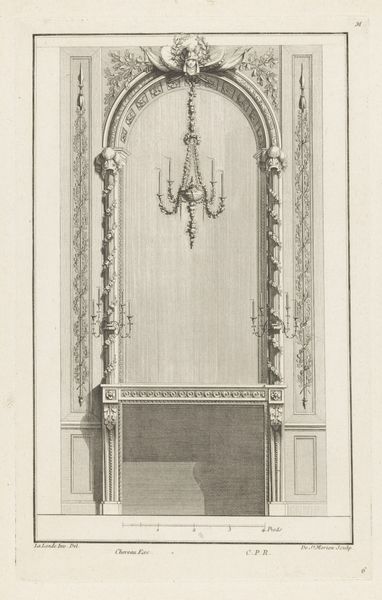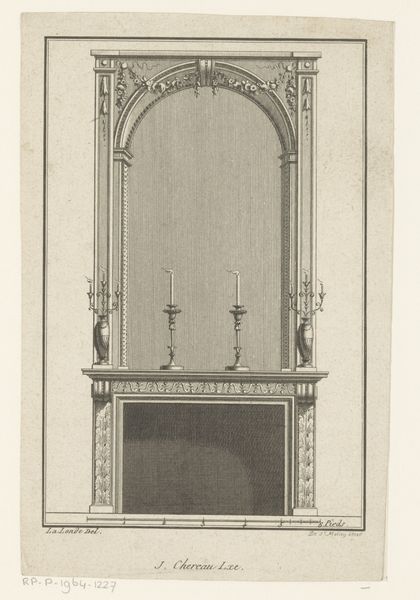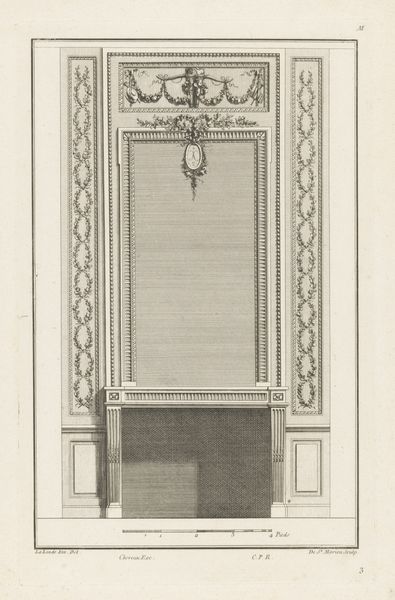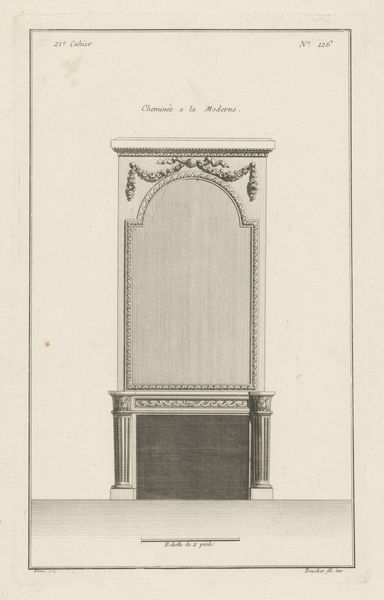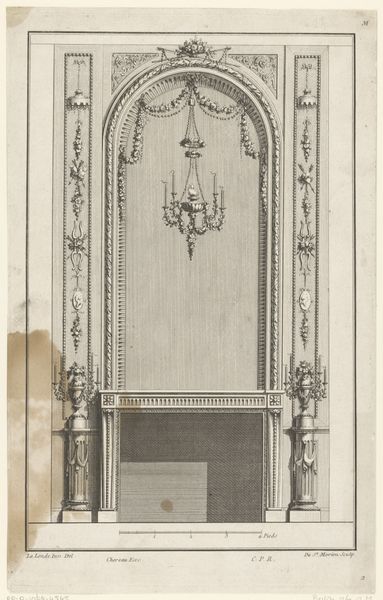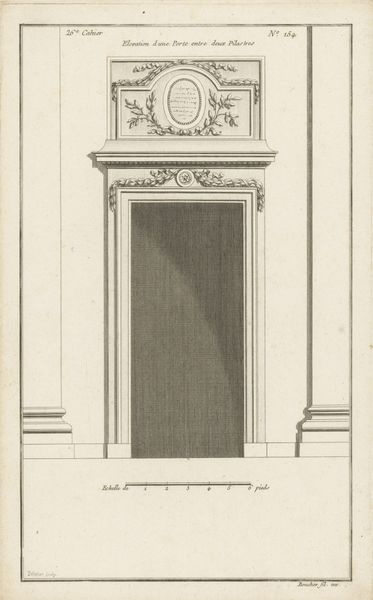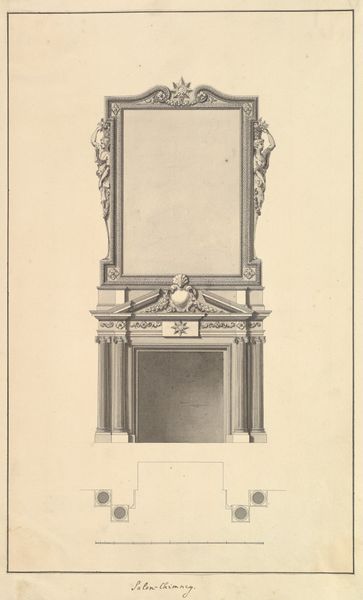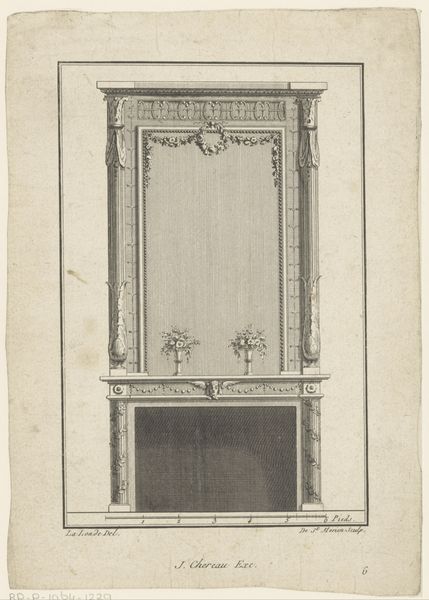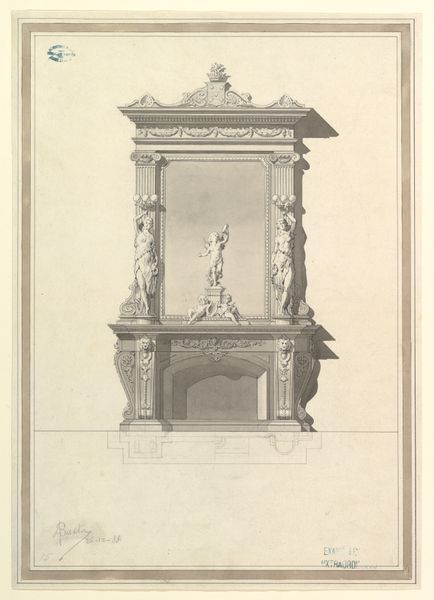
drawing, pen, engraving, architecture
#
drawing
#
neoclacissism
#
classical-realism
#
form
#
geometric
#
line
#
pen
#
engraving
#
architecture
Dimensions: height 344 mm, width 218 mm
Copyright: Rijks Museum: Open Domain
Curator: Let's consider this intriguing drawing from the Rijksmuseum collection: "Schouw met kroonluchter" or "Fireplace with Chandelier," created between 1784 and 1785 by de Saint-Morien. It's rendered in pen and engraving, showcasing a design for an interior. What strikes you immediately? Editor: The rigidity, almost an unsettling perfection in the lines. There's a coldness to the precision. The lack of organic or handmade feeling screams "machine," yet I know it predates full industrialization. The illusion feels carefully constructed for those that owned or could afford this luxury, and others not! Curator: Precisely. This reflects the rise of Neoclassicism, where we see a deliberate revival of classical forms. De Saint-Morien offers us not just a depiction but a social statement, linking interior design to power dynamics and taste. Consider the cultural values embedded in geometric order during the late 18th century. Editor: And let's think about what engravings meant back then, as labor-intensive production, from the pens, plates, to the eventual production of a mass distributed print as architectural reference! This print acted almost as the supply chains for domestic grandeur! This reminds me that there were makers of art in workshops. Curator: A powerful reminder of the relationship between art, craft, and commerce! The drawing gives insight into both the artistic intentions, as well as those labor structures which brought artwork into spaces to signal specific meanings. Editor: It speaks volumes about the aspiration for symmetry and ideal proportion but how that pursuit depends upon those not given credit. The form masks labor’s history and obscures who it represents. Curator: Exactly. The very act of creating such a pristine depiction relies upon various hands, yet that story of how it was produced gets deliberately concealed and makes us question even the notions of authenticity, especially with so many architectural copies. Editor: I find myself thinking a bit more about those makers and laborers because their hand makes spaces appear clean. Curator: An important point that brings greater appreciation for the complex histories encoded within it.
Comments
No comments
Be the first to comment and join the conversation on the ultimate creative platform.

